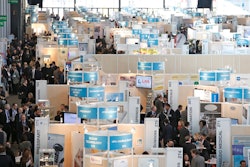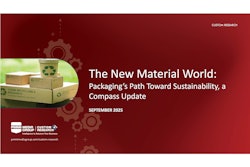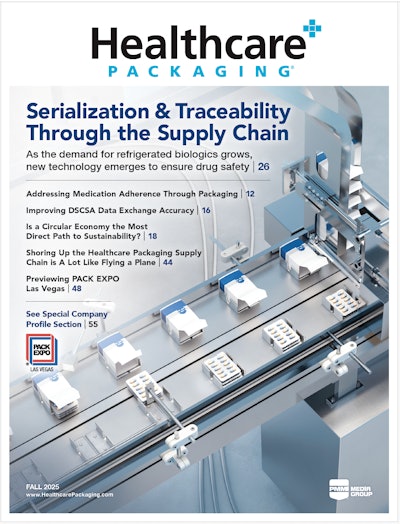On October 18, 2013, the Senate passed it without amendment, and it was subsequently signed into law by President Obama.
The track-and-trace provisions, themselves known as The Drug Supply Chain Security Act within the DQSA, were refined through a 20+ month process of negotiations among the members of the Pharmaceutical Distribution Security Alliance (PDSA). This is an industry lobbying group with representation from the following groups:
PhRMA = Pharmaceutical Research and Manufacturers of America (the big brand manufacturers)
HDMA = Healthcare Distribution Management Association (the big wholesalers)
HIDA = Health Industry Distributors Association (the smaller wholesalers)
BIO = Biotechnology Industry Association (biotech manufacturers)
GPhA = Generic Pharmaceutical Association
Other participants in the negotiations included a number of the largest companies in the U.S. pharmaceutical supply chain, as well as key members of Congress and their staffs. The proposed legislation underwent multiple iterations culminating in Title II of the DQSA bill.
John M. Gray, President and CEO of the HDMA, proclaimed the successful passage of the DQSA to be one of the most significant accomplishments of HDMA dating back to its founding in 1876.
What will it mean?
Several things happened right away. First and foremost, all current state and federal serialization and pedigree laws were preempted. That is, they become inoperative—replaced nationwide by the DQSA. The importance of this one effect cannot be overstated. This was the number one aim of the PDSA, and it is what kept the organization together when competing interests sometimes threatened dissolution. Preemption resulted in the elimination of the frequently discussed “patchwork” of U.S. drug pedigree laws in one fell swoop. The patchwork was replaced with a single approach to supply chain security as outlined in Title II of the DQSA.
Second, the clock will begin ticking on many specific and detailed new U.S. Food and Drug Administration (FDA) requirements for manufacturers, wholesale distributors and organizations, and individuals who dispense drugs. Congress will also direct the FDA to take specific actions, like developing national standards for wholesale distributors and third-party logistics providers, publishing an extensive list of draft and final guidances, and conducting at least one industry pilot—all over a 10 year period.
The following is just a partial list of the timed requirements for U.S. pharma supply chain trading partners:
WITHIN ONE YEAR OF ENACTMENT
• FDA will have to publish standards for the interoperable exchange of transaction information, history, and statements in paper or electronic form.
BEGINNING ON JANUARY 1, 2015
• Companies in the supply chain will only be allowed to do business with trading partners that hold a valid state or federal license;
• Companies will need to begin following the FDA’s guidance in providing their customers with transaction information, transaction histories, and transaction statements in either paper or electronic form and keep these records for six years.
• Drugs must be identified within the transaction information by lot number and quantity, not by serial numbers (serial numbers would not be required yet). Wholesale distributors that buy drugs directly from the manufacturer or exclusive distributor will not be required to include lot numbers, the initial transaction date, or the initial shipment date from the manufacturer. Also, the transaction information, history, and statement they provide to their customers could be any combination of self-generated paper or electronic documents, or manufacturer provided information on the product packages themselves.
• Drug manufacturers and repackagers will be required to have a system in place that would allow them to respond to verification requests for suspect product. All supply chain members need to have systems in place to properly quarantine and disposition drugs that are found to be suspect by the FDA, themselves, or by a trading partner. Given the short lead time, it is likely that these “systems” would initially be a series of specific business processes defined within standard operating procedures (SoPs).
WITHIN FOUR YEARS OF ENACTMENT
• Manufacturers will be required to affix or imprint a 2D barcode containing a unique FDA Standardized Numeric Identifier (SNI) (an SNI is a National Drug Code [NDC] combined with a unique serial number for that NDC), the lot number, and the expiration date on each drug package (except for exempt products). In addition, the manufacturers will also be required to apply a linear or 2D barcode containing a unique FDA SNI for the case, the lot number, and the expiration date on each homogenous case of drugs. They will need to keep records of this data for six years. Note that there will be no legal requirement for the collection of aggregation data, or for the SNIs to be included in the transaction data that is passed to downstream customers (for the first 10 years).
• Manufacturers will be required to begin providing wholesale distributors, repackagers, and third-party logistics providers (3PLs) the transaction information, history, and statements only in electronic form in conformance with the FDA standard. Because manufacturers will be required to provide this information electronically, the recipients need to be prepared to receive it that way at the same time. However, when manufacturers ship directly to a dispensing healthcare practitioner, they will be able to continue to provide this information in paper form.
• Manufacturers will be required to begin responding to verification requests of suspect drugs that are based on package-level SNIs.
• When a manufacturer receives resalable returned drugs, those drugs must be verified through the SNI of the homogenous cases, or, when a case has been broken, at the package level. Nonsalable returned drugs will not need to be verified.
WITHIN FIVE YEARS OF ENACTMENT
• Repackagers will need to encode drugs in the same way as manufacturers above.
• Repackagers will be required to begin verifying suspect drugs at the SNI level.
• Repackagers will need to begin responding to verification requests of suspect drugs that are based on package-level SNIs.
• When a repackager receives resalable returned drugs, those drugs must be verified through the SNI of the homogenous cases, or, when a case has been broken, at the package level.
WITHIN SIX YEARS OF ENACTMENT
• Wholesale distributors will only be able to engage in transactions involving pharmaceutical products that are encoded with the SNI, lot, and expiration date as required of manufacturers above.
• When a wholesale distributor receives resalable returned drugs, those drugs must be verified through the SNI of the sealed homogenous cases, or, when a case has been broken, at the package level. Nonsalable returned drugs will not need to be verified.
WITHIN SEVEN YEARS OF ENACTMENT
• Dispensing organizations will only be able to engage in transactions involving pharmaceutical products that are encoded with the SNI, lot, and expiration date as required of manufacturers above.
• Dispensing organizations will need to investigate suspect product at the lot level.
WITHIN 10 YEARS OF ENACTMENT
Ten years after enactment of the DQSA will mark the beginning of some important and significant changes. From that point on, companies will no longer need to pass on to their customers transaction histories all the way back to the original manufacturer. They will only need to include information about where they bought the drug. This will represent the shift of the requirements from a full supply chain history sharing system into a “one-up, one-down” sharing system. In addition, the following important new requirements will be imposed:
• All data exchanges will have to be electronic;
• The unit-level SNIs of each drug package will have to be included in the transaction information that is passed to each customer;
• Systems and processes for verification of product must take place at the package level, including the SNI, as defined by the FDA, and may include the use of aggregation and inference.
All of the requirements of H.R. 3204 will apply nationwide, thus protecting all citizens evenly. Investments made by manufacturers, wholesale distributors, and chain pharmacies of national scope will benefit patients across the country, not just in one state. Companies that are prepared for the California pedigree law would be able to reapply all of their investments made in serialization systems, and much of those made in data management systems.
The law is quite complex, and this quick overview doesn’t cover every aspect. If you find yourself facing the new law, get some help before you proceed with implementation. This Playbook is a great start, and contains lists of web resources and downloads.
Liked this article? Download the entire playbook here.





















